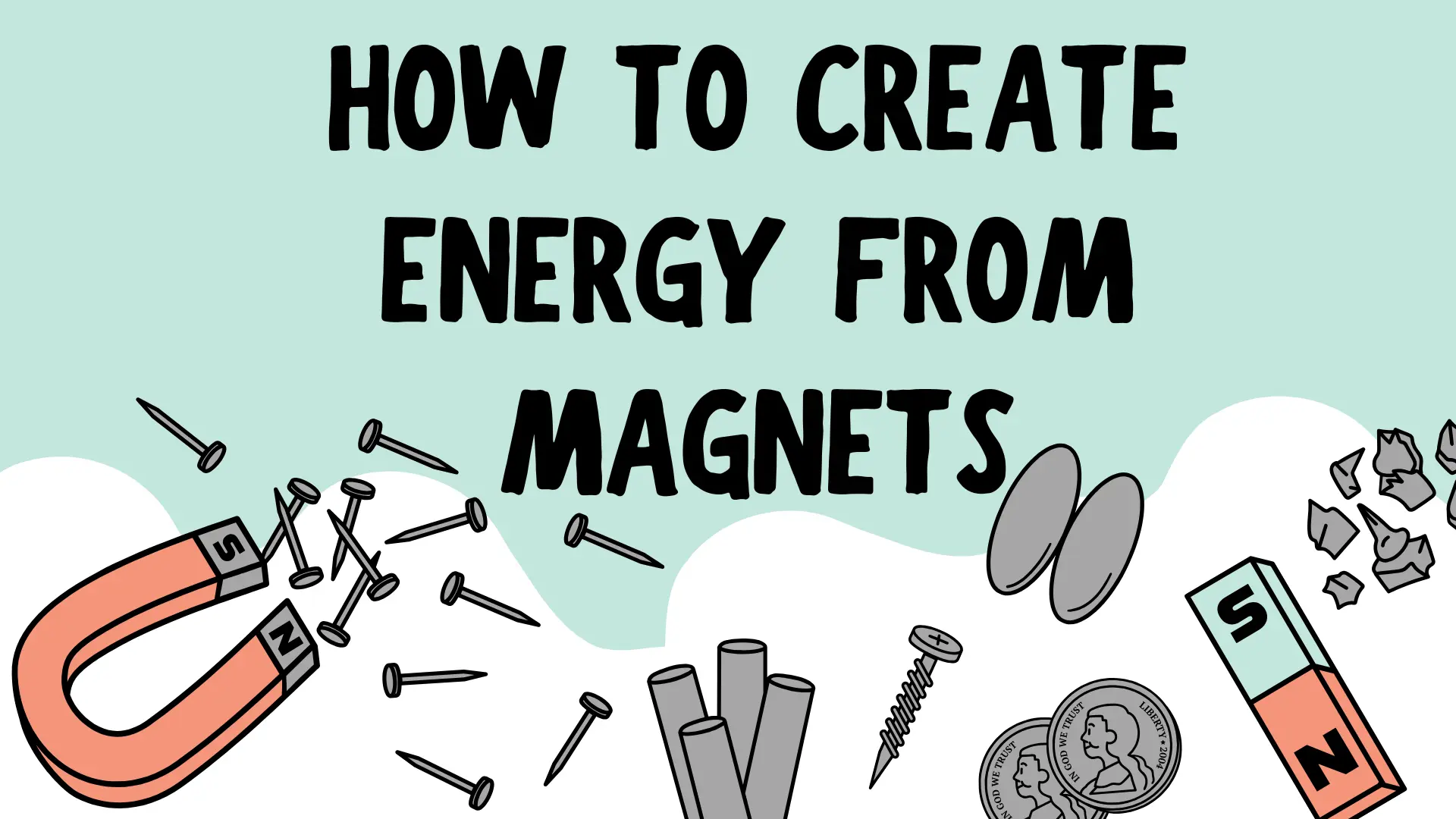How to create energy from magnets?
 Introduction
Introduction
Magnets: physics can be fascinating and people have been trying to create an energy source from magnets for centuries. The concept is that magnets are never-endingly powerful, and summoning that power has only not happened yet, because we do not fully understand how it works yet and there are no practical applications for it yet. Here we will have a look into some ways to generate energy using magnets, their principles and usage.
Table of Contents
Electromagnetic Induction
The most common way of converting magnets energy into electricity is via electromagnetic induction. This was learned in the 19th century by the physicist Michael Faraday, whose law of electromagnetism states that a changing magnetic field can induce an electric current in a conductor. The basis for electric generators, which convert mechanical energy to electric energy by spinning a coil of wire within a magnetic field.
Electromagnetic induction takes place through the following steps:
Permanent magnet or electromagnet to produce a magnetic field.
Inside the field, there is a conductor usually a coil of wire.
Moving the magnet or the conductor then changes the magnetic field.
A current is induced in the conductor by this changing magnetic field.
Electromagnetic induction can be used by varying other factors like strength of the magnetic field, the number of turns in the coil and the rate at which the magnetic field changes. A different method of using magnets to create energy is known as magnetohydrodynamics (MHD). This method uses the interaction between a magnetic field and a conductive fluid, like a plasma or liquid metal. As the fluid passes through the magnetic field, it induces an electric current that can be harvested as energy.
MHD generators can be more efficient than traditional generators, which rely on moving parts. But they are still in the early stages of development and face some significant issues, including the high temperatures needed to create a conductive fluid and the challenge of holding the fluid inside the magnetic field.
Magnetic Energy Storage
The magnets not only can generate energy, but they can also be used to store energy. This involves using a magnetic field to store energy in a material (often a superconducting coil). This is the new type of storage that works by quickly collapsing the magnetic field when energy is needed and returning the flow of electricity.
Compared to conventional batteries, magnetic energy storage has numerous benefits. It stores a lot of energy in a small amount of space, and it releases that energy quickly. Magnetic energy storage is a new type of technology still in development, which faces challenges like the high price of superconducting material, as well as the challenge of controlling the magnetic field.
Potential Applications
There are many things that can be done with the different types of energy generation from the magnets. Electromagnetic induction is already employed in electric generators that illuminate everything from homes and businesses to cars and trains. In power plants where MHD generators will be used but their efficiency will be much higher. This technology could also have applications in renewable energy systems where magnetic energy storage could be used to store energy from solar and wind sources, as well as providing backup power for crucial systems.
Nevertheless, though these applications have all seemed promising for many years, we have yet to see any concrete implementations of magnetic energy in real-world applications, especially in fields such as transportation or even medicine. Maglev trains use magnets to levitate above the tracks, decreasing friction and enabling higher speeds. They're also utilized in medical imaging modalities, including MRI, to produce detailed images of the human body.
Issues and Future Perspectives
Though producing energy through magnets is a possibility, there still lies a great deal of issues that must be solved. This affidavit is about one of the tough things: Current methods are expensive. Electromagnetic induction is one of the oldest and good technologies, however, it is not as efficient. It is important to note that MHD generators and magnetic energy storage are still in their infancy, with even more severe issues relating to cost and efficiency. This challenge is the developing new materials and technologies. The development of new superconducting materials, for example, could pave the way for more practical magnetic energy storage. New magnetic materials might also make for better generators and motors.
So even with all these challenges ahead, the future of energy production from magnets stays a bright one.LEADING ARTICLES If R & D proceeds successfully, we may be able to rely heavily on magnetic energy as we face a wider world and a growing energy need.
Conclusion
Energizing from magnets is a field with a long past but a shiny future. Despite challenges ahead, harnessed magnet power has tremendous potential. Magnetic energy may likely be key to powering our world in the future, given continued research and development.
RIZVE MAMUN
CEO / Co-Founder
Enjoy the little things in life. For one day, you may look back and realize they were the big things. Many of life's failures are people who did not realize how close they were to success when they gave up.





